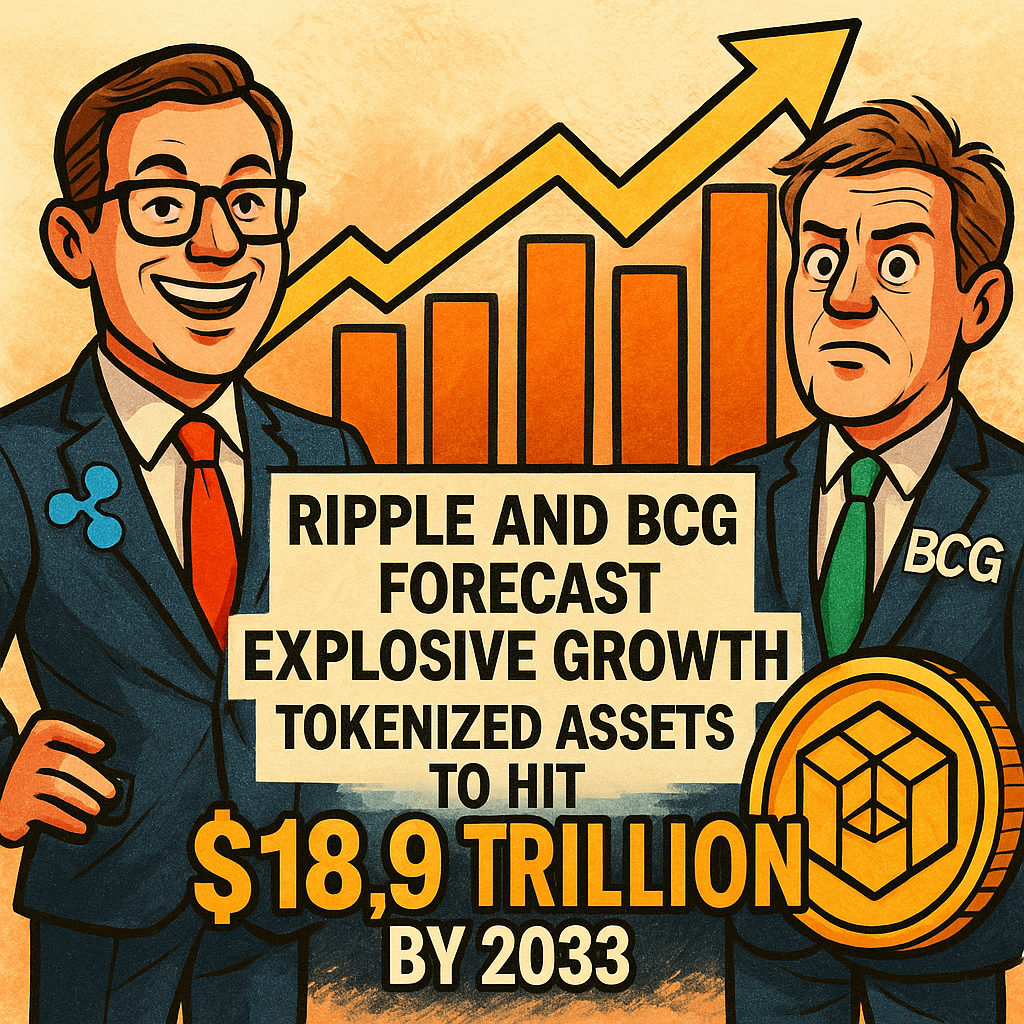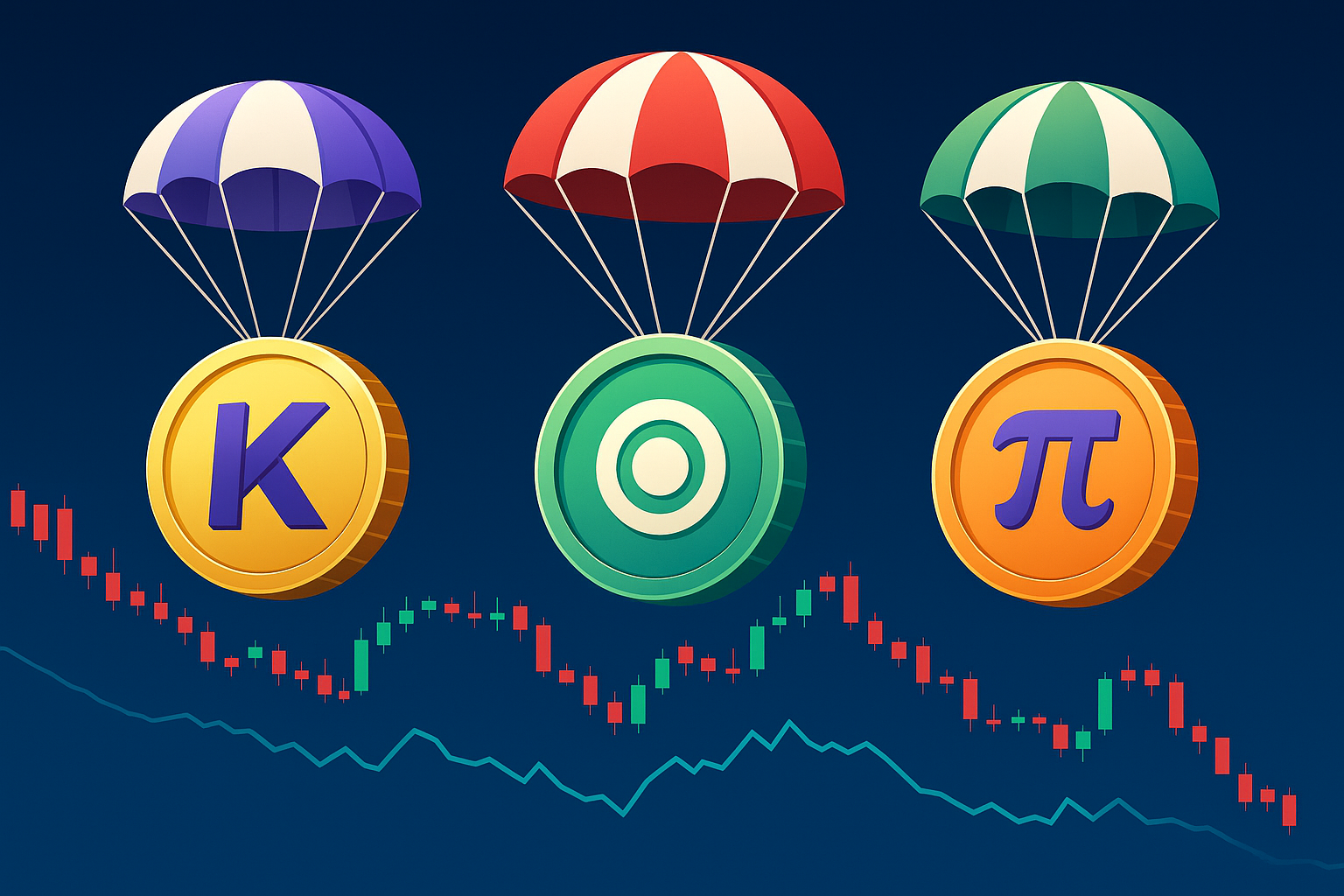The tokenized assets market is on track for explosive growth, with projections reaching $18.9 trillion by 2033. This forecast comes from a joint report released Monday by Ripple and Boston Consulting Group (BCG). It marks a pivotal moment, as blockchain-powered real-world assets (RWAs) near what both firms call a “tipping point.”
The report estimates a compound annual growth rate (CAGR) of 53%, based on a balanced scenario between a conservative $12 trillion and an optimistic $23.4 trillion outcome over the next eight years.
Traditional Finance Accelerates Tokenization of Assets
Tokenization—recording ownership of traditional assets like securities, commodities, and real estate on blockchain networks—is rapidly reshaping traditional finance. As a result, major institutions have begun integrating this technology to streamline operations, allowing for faster, cheaper, and round-the-clock settlement.
Financial giants have already made significant strides. JPMorgan’s Kinexys platform has processed over $1.5 trillion in tokenized transactions, averaging $2 billion in daily volume. Meanwhile, BlackRock’s BUIDL fund, a tokenized U.S. dollar money market product created in partnership with Securitize, has accumulated nearly $2 billion in assets under management. Notably, the fund is increasingly finding utility in decentralized finance (DeFi).
“The technology is ready, regulation is evolving, and foundational use cases are in the market,” said Martijn Siebrand, Digital Assets Program Manager at ABN AMRO, highlighting the growing institutional confidence.
Tokenized Assets Already Delivering Real-World Impact
The report identifies tokenized government bonds and U.S. Treasuries as early success stories. These instruments enable corporate treasurers to move idle capital into short-term government securities directly from digital wallets—eliminating intermediaries and supporting real-time, 24/7 liquidity management.
Additionally, private credit is emerging as another high-impact use case. Tokenization could democratize access to this traditionally opaque and illiquid market. By doing so, it enhances pricing transparency and enables fractional ownership for a broader range of investors.
Carbon markets also stand to benefit. According to the report, blockchain-based systems can improve accountability and traceability in emissions trading, offering a more robust path for sustainable investment.
Regulatory Shifts Support the Growth of Tokenized Assets
As regulatory frameworks mature and institutional adoption intensifies, the groundwork for a tokenized financial future grows stronger. However, success still depends on resolving several key challenges.
Key Roadblocks Slowing Tokenized Assets Adoption
Despite the promising outlook, the Ripple–BCG report outlines five critical barriers that hinder the widespread adoption of tokenized assets:
- Fragmented infrastructure
- Poor interoperability across platforms
- Varying regulatory standards by jurisdiction
- Inconsistent custody solutions
- A lack of standardized smart contracts
Currently, most tokenized assets settle independently. Moreover, the reliance on off-chain cash transactions limits blockchain’s full efficiency. Without unified delivery-versus-payment (DvP) standards, secondary market liquidity remains difficult to unlock.
Regulatory disparities further complicate the landscape. Countries like Switzerland, Singapore, the UAE, and the EU have developed strong legal frameworks to support tokenized securities. In contrast, major markets such as India and China remain either hesitant or underdeveloped in this area. Consequently, firms must build region-specific strategies, which adds to operational complexity.
The Three-Phase Path to Tokenized Asset Mainstreaming
Nevertheless, early adopters continue to gain traction. The report outlines a three-phase adoption model:
- Start with low-risk instruments such as bonds and money market funds
- Progress into complex assets like private credit and tokenized real estate
- Ultimately tokenize traditionally illiquid assets, including infrastructure and private equity
Most institutions currently navigate the first or second phase. Moving forward, broader adoption will depend on improved regulation, better cross-platform interoperability, and maturing digital infrastructure.
Tokenization Unlocks Cost Savings and Efficiency
The report also highlights tokenization’s cost-saving potential. Institutions can streamline a range of financial activities—such as bond issuance, collateral management, and real estate operations—by leveraging blockchain-based systems. These savings create a compelling case for continued innovation and investment.
Conclusion: The Future of Finance Lies in Tokenized Assets
The Ripple–BCG report paints a vivid picture of finance’s future—one where tokenized assets transform how institutions store, transfer, and access value. Although challenges remain, the momentum behind tokenization continues to build.
With real-world adoption already underway and projections nearing $19 trillion by 2033, the financial sector stands on the cusp of a transformative shift. As technology advances and regulatory clarity improves, tokenization will move from a niche innovation to a mainstream infrastructure—offering unmatched efficiency, accessibility, and liquidity on a global scale.

 News
News  April 7, 2025
April 7, 2025  6 min.
6 min. 









